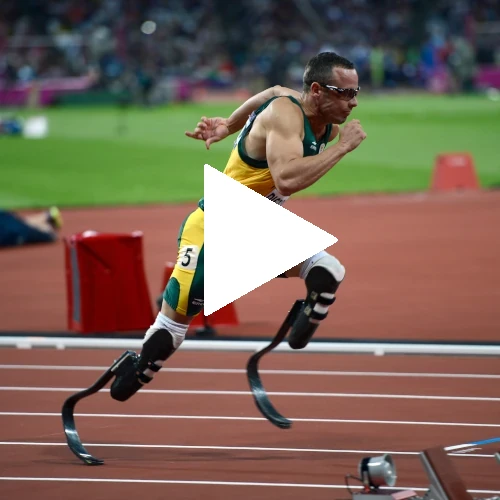People have been having this debate ever since Oscar Pistorius began racing nondisabled sprinters in the early 2000s. In 2008 the International Association of Athletics Federations (IAFF), which governs track and field competition worldwide, banned Pistorius from their events, citing scientific tests which showed that Flex-foot Cheetahs allowed amputees to run more efficiently than nondisabled athletes. That ruling was quickly overturned by an international court, and Pistorius continued to participate in standard track meets, including the 2011 World Championships (where he won a silver medal) and the 2012 Olympics in London.
Although Pistorius didn’t come close to the podium at the 2012 Olympics, some observers thought it was just a matter of time before artificial legs outstripped organic ones. To forestall such an outcome, the IAAF reinstated its prohibition on paraathletes while engineers and biomechanists studied the issue. Ever since, Paralympic stars have been fighting for the right to compete in the Olympics and other nondisabled events, while researchers have struggled to find consensus about whether running blades give amputee runners an advantage.
But there was still no consensus by 2016, when the Olympics opened in Rio — some researchers found that blades confer an advantage, while others found the exact opposite. “The question of whether a carbon-fiber prosthetic offers athletes an unfair advantage may never be fully answered,” wrote Scientific American.
The best, most current study comes down firmly on the “no advantage” side of the question. Published in 2022 in the British journal Royal Society Open Science, the study found that “the use of running prostheses provides no competitive advantage over 400 meters compared to biological legs.” Specifically, the paper argued that blade runners lose speed (compared to nondisabled runners) during the initial acceleration phase of a race, while rounding curves, and when reaching peak aerobic capacity. While acknowledging that further research is warranted, the authors found no indication that running blades improved performance.
This study is certainly not the last word on the subject, but it’s the most conclusive study to date. Ironically, it comes in the midst of the first Olympic/Paralympic cycle in more than a decade in which no amputee runner is suing for the right to participate in the Olympics.



